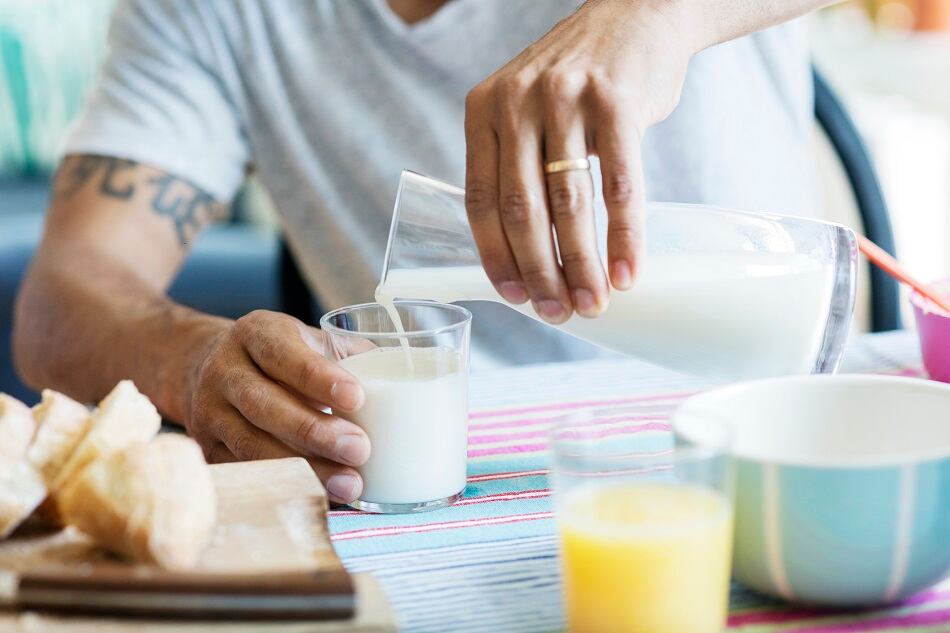"The objective of this study was to create a stable colloidal dispersion of casein micelles (CM) with pea protein (PP) to improve the solubility of PP in aqueous solution," explained scientists from the Department of Food Science and Technology at The Ohio State University, who recently published their report in the Journal of Dairy Science. The project was funded by the Parker Endowment (Department of Food Science and Technology, The Ohio State University, Columbus).
The findings detailed a novel method of supplementing cow milk with vegetable protein (pea protein) by encapsulating pea protein into CM molecules.
Pea protein was chosen by researchers because of its balanced branch chain amino acid structure and for its non-allergenic properties.
Unlike previous research studies, researchers used readily available dairy processing equipment that could be easily reproduced in any dairy facility.
"As the dairy industry struggles to maintain consumer attention in the midst of declining fluid milk sales, the demand for plant-based protein is growing due to consumers’ desires for healthy high-protein products that are also environmentally conscious. This research combines these goals and offers potential for innovations with other plant-based proteins or nutraceuticals with low solubility, allowing the dairy industry to provide highly nutritious new products that also meet evolving consumer preferences," wrote researchers.
Successful casein and pea protein blend
The concept of a hybrid dairy and plant protein milk product is not new, however. Dairy Farmers of America launched their Live Real Farms Dairy+ milk blends (using dairy milk and either oat and almond milk) in 2019, but according to their website has since discontinued the product line.
“Plant-based proteins, such as those in peas, can be challenging to use in foods because of their low solubility and undesirable off-flavors. Pea protein, in particular, can be a challenge to use in food systems because of its low solubility and undesirable bitterness,” noted Rafael Jiménez-Flores, PhD, lead investigator of the study.
Casein, the protein found in cow's milk, naturally binds together to form large spherical molecules suspended in the water component of milk which carry most of the nutrients, explained the study's researchers,
One end of the casein protein is attracted to water (hydrophilic) and the other is repelled by it (hydrophobic). When the proteins join together, the exterior of the resulting large molecule, called the casein micelle, is made up of the water-attracted end of the protein, while the core of the casein micelle is the water-repellant side. This structure allows casein micelles to carry most of the vitamins and minerals, such as calcium.
“Our research team used these unique features of casein micelles to turn them into transporters of additional protein from a plant-derived source, in this case, peas,” said first author Abigail Krentz, MS.
In order to turn casein micelles into transporters of extra nutrients, the micelle had to be broken open, the nutrients incorporated, and the micelle structure reassembled. Past research has accomplished this by using ultra-high pressure and other specialized techniques, but this study achieved its results using readily available dairy processing equipment that could be easily reproduced in any dairy facility, note researchers.
The resulting CM:PP blend showed promising results for the use of mixed protein, functional food product in the form of liquid, gel, or powder applications.
"These results supported our hypothesis that low-temperature homogenization can successfully be used to create a colloidal dispersion with increased stability, in which insoluble plant-based proteins may be incorporated with casein micelles in an aqueous solution," added Krentz.
"Future experiments should deal with the amount of PP that associates within the CM, the nature of these associations, and sensory analysis."
Source: Journal of Dairy Science
Use of casein micelles to improve the solubility of hydrophobic pea proteins in aqueous solutions via low-temperature homogenization
Authors: Abigail Krentz, et al.

